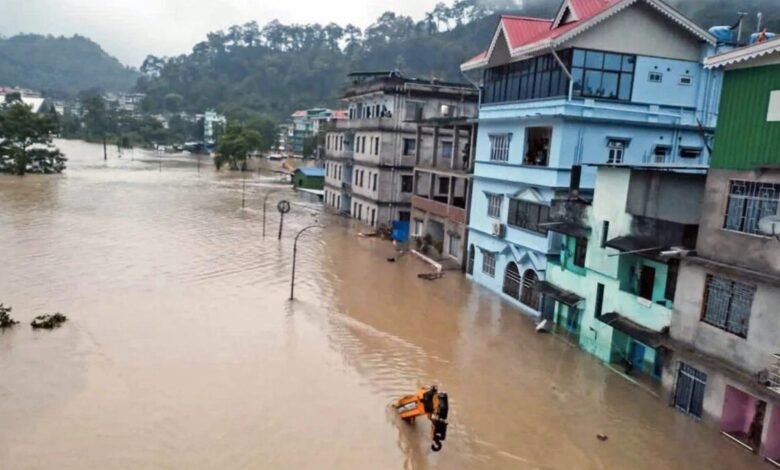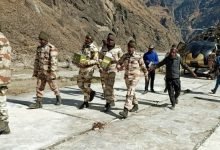23 Jawans have gone missing in the Sikkim Flash Floods: How scientists had long predicted the catastrophe more than a decade ago!
In 2013, the Kedarnath catastrophe pontificated the ill effects of land infringements in the Himalayas. Today, another flash flood plagues India because the government took no lessons earlier.

On October 4th, Sikkim, one of the most beautiful states of India enveloped by the mighty Himalayas, got deluged by a cataclysmic cloud burst. The calamity has claimed the lives of twenty, and over a hundred people have gone missing thus far.
Among those who have gone missing is a pack of 23 military personnel stranded in an army vehicle during the ravaging flash flood. While the rescue operations are underway, none of the wanted Jawans have been traced.
What has happened?
A cloudburst is a severe weather phenomenon when a small area receives intense rainfall (north of 100 millimetres) within an hour. As per the official updates, such a cloudburst near the South Lhonak Lake in North West Sikkim had triggered a flash flood in the Teesta River, which resulted in the severe inundation of the nearby regions. Such was the abruptness of the flood that the water level rose by approximately 20 feet before lurching in on the banks of the river, primarily affecting the regions near Chungthang.
In a catastrophe that lasted not more than 10 minutes, more than 22 thousand people got impacted, of which twenty have already lost their lives and more than 100 have gone missing, including the above-mentioned pack of 23 soldiers. According to the reports, the troop got stranded inside a military vehicle stationed at Bardang near Sitmang region during the ravaging flood.

As the water level spiked in minutes, large-scale devastation followed as the ferocious flood engulfed the buildings and structures near the Chungthang town. The colossal 1200 Megawatt ‘Sikkim Urja Teesta Stage-III Dam’ built at the staggering cost of Rs. 14,000 crores, and eleven other bridges, got devoured by the angry Teesta in a whisker.
Why has the flood taken place?
Many are labelling the cataclysm as Sikkim’s worst-ever flash flood in history! Scientists are labelling it under the ‘GLOF’ (Glacial Lake Outburst Flood) category.
Glaciers melt on their own, the rate of which has been severely augmented by global warming. The water from these glaciers collects in water bodies called ‘Glacial Lakes.’ South Lhonak is one such glacial lake that got overspilled under the cloudburst.
According to the satellite images captured by the Indian Space Research Organisation (ISRO) immediately before and after the catastrophe, more than 100 hectares of water came crashing down the stream!
At a glance, the event looks like nothing more than an unfortunate natural calamity. However, you will be taken aback when I tell you that scientists had been forecasting this tragedy for decades!

Foreboding by Tom Clement and numerous other scientists got shunned aside:
In 2013, an author from the ‘Pulitzer Center’ penned an article where he emphasised, “The Teesta River basin holds 313 glacial lakes, which flood with historical regularities. Such Glacial Lake Outburst Floods (GLOFs) can be expected to overflow reservoirs surrounding Chungthang.”
In 2003, the first assessment of Sikkim’s glacial inventory was carried out. The survey revealed that out of the 266 glacial lakes in Sikkim, 14 were at a critical stage. Researchers specifically explained how the volume of the South Lhonak Lake kept increasing due to unprecedented glacial melting. Between 1962 and 2019, the glacier that fed the Lhonak Lake receded by 2.4 kilometres!
Despite numerous calls of alert raised by environmentalists and scientists, the government had not refrained from meddling with the region’s fragile ecology. As the rivers got burdened under dams constructed one after the other, the land got smothered under unregulated buildings and over-tourism.
The 2013 Kedarnath cloudburst tragedy, which claimed the lives of more than 5,000 people and destroyed infrastructure worth more than USD 500 million, should have ideally made us realise that ‘development cannot come at the cost of environment and destruction of lives.’ But have we learned a lesson?
It is high time we realised that this slapdash method of development and anthropogenic intrusion is cancer to the structural fragility of the mountains. We can only pray that normalcy returns to the region and the lost Jawans get rescued soon. Our heart genuinely goes out to the victims.


